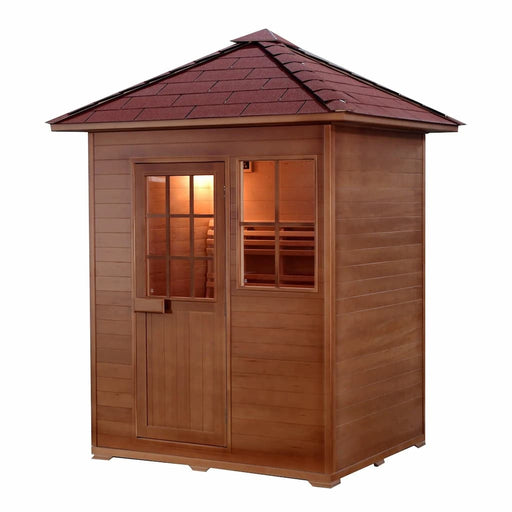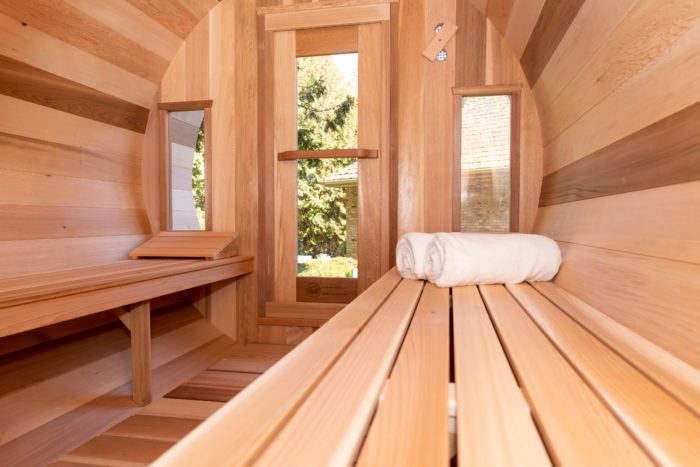The Greatest Guide To Traditional Sauna
The Greatest Guide To Traditional Sauna
Blog Article
Some Known Details About Traditional Sauna
Table of ContentsSee This Report on Traditional Sauna5 Simple Techniques For Traditional SaunaTop Guidelines Of Traditional SaunaThe Ultimate Guide To Traditional SaunaThe Greatest Guide To Traditional Sauna
The majority of the weight shed in a sauna is water loss and is re-gained upon rehydrating. Nevertheless, certainly sauna can be a fundamental part of a healthy weight management program. To check out the differences between typical and IR saunas, I will divide these right into verifiable, academic, and produced distinctions.Hence, the best factor in the saunawhich is at the ceiling directly over the sauna heateris normally in between 185 and 190 F. Claims that a conventional sauna surpasses 200 F is just not real and not appropriate for electric saunas sold in the US. The temperature level for a far-infrared sauna is usually established in between 120 and 140 F; nevertheless, unlike the standard sauna, the goal in and IR space is not to attain a high temperature.

When a conventional sauna has been appropriately heated, the sauna walls are cozy, the air temperature has actually achieved set temperature and the rocks are super warmed. As an intriguing side note, the warmed wall surfaces and the rocks are releasing far-infrared warm, incorporated with the heated air, to produce an "enveloping heat".
Little Known Questions About Traditional Sauna.
When the high temperature is accomplished, the components cycle on and off to preserve the heat. Most typical sauna customers enjoy pouring water over the rocks to develop heavy steam to increase sauna humidity levels. The advantages of pouring water over the rocks consist of: making the area much more comfortable, dampening the nasal flows, and enabling the use of aromatherapy by mixing vital oils with the water.

When the power goes into the body, it causes the body temperature level to boost and inevitably causes perspiration. In an infrared sauna it's vital for the emitters/heaters to remain on almost continuously. Considering that there is no mass of rocks to maintain warm, the sauna will cool down if the emitters turned off.
Indicators on Traditional Sauna You Need To Know
As stated over, the sauna bather in an infrared area wants to place himself in front of operating emitters to obtain optimal gain from the heat. The heating time for both rooms can be really different, depending on exactly how the spaces are utilized. For a standard sauna, a bather should permit 30-40 minutes for the area to attain a desired temperature and click here for info to appropriately pre-heat the rocks.

A well built sauna will normally achieve a temperature of 150-160 F in concerning 30-40 minutes (Traditional Sauna). For hotter temperatures, the area might require to warmth for a longer period. Once the space attains established temperature, the heater will certainly cycle on and off, generally operating about 50% of the time. The insulated wall surfaces and the heated rocks will maintain the room hot and at stable temperature levels.
To some, 15 minutes was "thrown away" while the infrared power heated the wood panels instead of warming a body, while others find a pre-heated room to be extra comfy and believe a raised beginning temperature level is needed to start perspiring. The length of advised usage for each and every room is roughly the exact same (10-15 mins per session); nonetheless, due to the lower air temperatures and the capacity to really feel the impacts of infrared warmth faster than a traditional sauna, it is not uncommon for an individual to spend a total amount of 20-30 mins in an infrared sauna.
Traditional Sauna - Questions

The typical expense per kWH of electrical power in the united state is roughly $0.11, so a 4.5 kW heating unit will his comment is here certainly cost around $.50 to compete one hour, if the heater runs continuously for one hour. Usually a sauna heating unit will compete 75% of the very first hour and 50% of subsequent hours on considering that the elements cycle once the established temperature is achieved.
A two individual far-infrared room is generally literally smaller sized than a typical sauna, frequently about 4' x 4' or smaller. The IR furnace is normally 1.5-1.7 kW utilizing a 120 volt 15 amp plug-in service. Considering that the area can be made use of quicker than a sauna space, we will certainly assume the space is utilized for to of an hour consisting of warm up time.
Finally, there is a rarely talked about difference in the social experience in between the 2 areas. While our culture has shed several of click for info the social advantage of the standard sauna experience, it can be very socially satisfying (Traditional Sauna). From family members time in the sauna, to heart-felt conversations with significant others, to sauna partiesthe traditional sauna experience can result in intimate socializing
Not known Facts About Traditional Sauna
Most higher end infrared rooms consist of tinted light therapy, audio systems and full-glass fronts.
Report this page